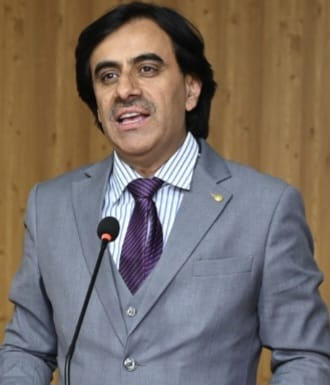
By Abdullah Khan
Shakeel Qadir Khan: Architect of a…
Balochistan’s Highways Unsafe, Traveling…
The Health Services Academy (HSA), a Public Health University in Islamabad, organized the 14th International Public Health Conference, 2024, in collaboration with Pathfinder International and other partners, on November 5-6. Titled: ‘Transforming Research into Action: Redefining Public Health through Social and Behavior Change, the Conference was graced by Syed Yusuf Raza Gilani—the Acting President of Pakistan and Chairman Senate, as the Chief Guest at the Inaugural Session. Dr. Shahzad Ali coordinated the conference and among other key note speakers, I was honoured to shed light on the topic: ‘Empowering Choices: An Overview of Social and Behavioral Change for Family Planning in Balochistan’. During the conference, I also had the opportunity to share my views in the Scientific Session that followed Inaugural Session. The key policy related areas that I tried to cover included aspects of better service delivery and their subsequent outcomes.
It is significant to note here that Social and Behavioral Change (SBC) is an essential component in achieving the health and family planning commitments of Pakistan, and the Global Development Goals, in specific Goal 3: ‘Good Health and Wellbeing.’ It can be defined as deep understanding of human and societal behavior to increase adoption of healthy behaviors and influencing social norms that reinforce those behaviors. Studies show that there are three key reasons why SBC is an essential component of any public health and family planning program: first, SBC is rooted in global evidence and the best practices that have exhibited increase in health and family planning services and better outcomes; second, SBC complements services delivery components fostering multiple positive outcomes; third, it demonstrates high return on investment.
When it comes to Baluchistan, the province requires a strategy that is different from other provinces. 44% of the overall landmass of Pakistan, and stretching on 347,190 sq kms, Baluchistan is the least populated province with a density of 12 persons per km². Poor infrastructure, fragile law and order and rampant poverty—71% as per the Multidimensional Poverty Index (MPI), raise serious concerns for the public policy makers. Nevertheless, the poor development indicators, and the small population in proportion to the land mass on the one hand, and the country’s resource distribution, mainly on population basis under the National Finance Commission (NFC), allocation of seats in the National Assembly and Senate, on the other hand, have contributed to the nurturing of a particular mindset among the political leadership and policy makers to view Balochistan’s fewer headcount a demerit. The NFC formula and allocation of seats in the parliament on solely population basis are a forceful disincentive for the cause of family planning and population control in Balochistan’s context. This is a major challenge for the Department of Population Welfare Balochistan to change behavior at the top. Moreover, at the individual and community level, there are generic issues of unacceptability, accessibility and gap between demand and supply that have always undermined family planning program.
This problem analysis in view, the PWD Balochistan is adopting a holistic approach using the Socio-Ecological Model for Change which is a framework for understanding and addressing complex issues like family planning and reproductive health. It examines how different levels of influences—ranging from individual to policy—interact and shape behaviors, norms, and access to resources.
Adopted primarily to target political leadership and policymakers is the Top-Down Approach to convince them through SBC techniques that the existing high population growth of about 3.2% is straining the resources, in specific the water resource, given Balochistan’s severe water scarcity. Moreover, the leadership is being sensitized that Family Planning does not mean to have two children, rather it aims at developing healthy human resource for overall economic growth and development. The new population narrative, Tawazun (Balance), which is in harmony with the rights-based approach of voluntarily planning and the Islamic ethos of moderation is a very feasible SBC tool to change the leadership approach towards family planning. This narrative has already been approved and adopted by federal and provincial governments and civil society organizations.
Similarly, the communities are being targeted by engaging Ulema, tribal leaders and other influencers to change thinking patterns, approaches and behavior towards family planning and reproductive health as without it, the Maternal Newborn, Child Health, Adolescent Health, Nutrition and other health indicators cannot be improved. The third layer is the Individual, who, under the framework, is being targeted through the doctors, social organizers, LHWs, Family Welfare Workers, Family Welfare Councilors, Community Based Family Planning Workers, and teachers.
The above three levels function in symbiosis, closely interacting with and supporting one another. For example, norms and attitudes shaped by personal relationships can influence community-level support or resistance. And community norms and available resources can impact interpersonal relationships and individual choices; thus, putting impact on the political leadership and policy makers to guide and steer right policy decisions to incorporate Family Planning into the overall Health Framework, with due resource allocation.
In this way, the SBC will have impact on individuals that affects the family and peer networks, leading to community, and at the top is the social and structural fabric that includes leadership, policy makers, which can be helpful in mobilizing resources through better public policy guidelines, and above all, the overall social and religious values which will change for positive and sustainable development.__ The writher is Public Policy Practitioner Secretary Population, Balochistan

